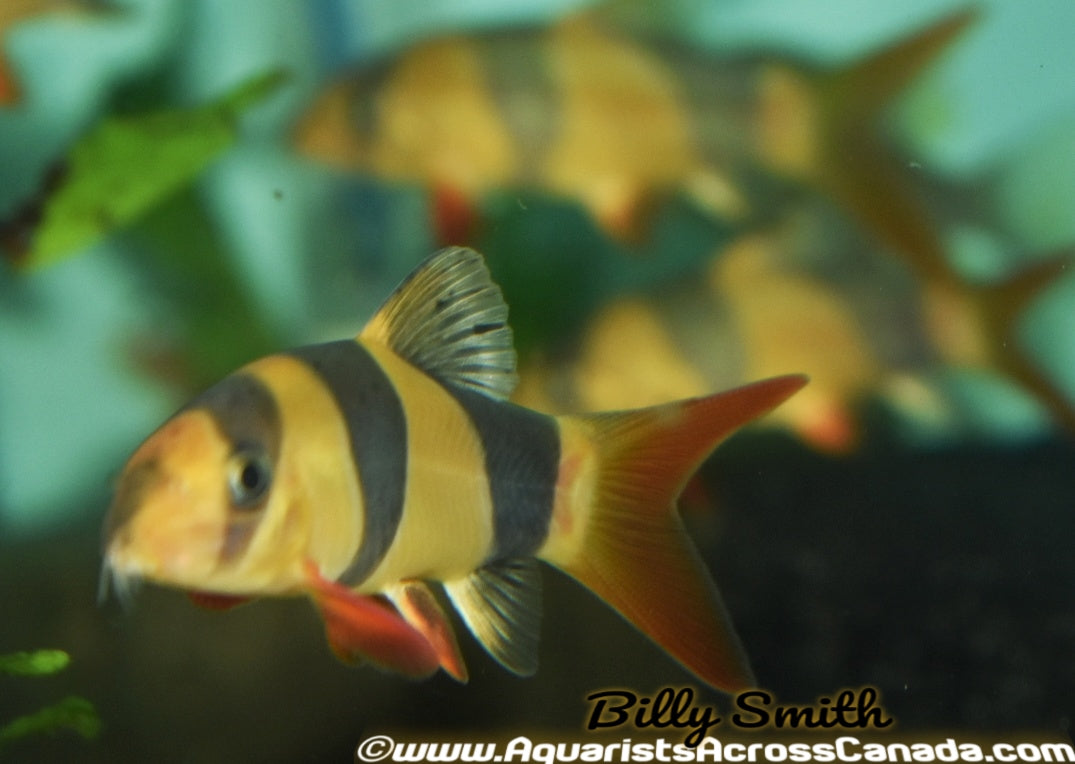SKU:LO1207M
CLOWN LOACH (Chromobotia macracanthus) 3-3.75" D2403Y
CLOWN LOACH (Chromobotia macracanthus) 3-3.75" D2403Y
Low stock: 10 left
Couldn't load pickup availability
The coloration and behavior of the clown loach makes it extremely popular, but it is very often improperly kept and therefore short-lived. This is extremely unfortunate because otherwise this is a very long-lived fish (with a lifespan of up to decades). It takes many years to mature; this is good, since as they mature, their brilliant coloration gets washed out. The proper way to keep these fish is in groups in large tanks. Two or three is bad, six or eight is good, more is even better. They are happiest together, and their social behavior is intriguing to watch. Having many specimens lessens the chance of serious aggression against any one fish. Provide well-filtered, well-oxygenated water.
They are greedy eaters, but water quality is extremelyl important, so frequent, large water changes are necessary to keep your loaches happy and healthy. Being scaleless, they are very susceptible to ich but do not tolerate medications well. Best treatment for ich is heat--90 degrees Fahrenheit water for 10 days, perhaps with half-doses of medication. These fish are less nocturnal than most loaches and will often be out and about during the day so you can enjoy their shenanigans. If you position a hollow piece of driftwood so you can see into it, you will be able to observe them when they pack themselves in for a rest in all positions--even upside down. These fish play dead.
They sleep on their sides, scaring their owners, then jump up and swim away when the aquarist goes to net out the "dead" fish. Unlike most fishes, clown loaches turn pale in aggressive displays. They also make audible clicks, especially when fighting over food. Drop in some worms, and you can hear the clicks across the room! This is not a species to toss one of into a 10-gallon community tank. Kept properly, fed generously with a wide variety of foods, they will delight you with their playful antics for many years to come.
http://www.tfhmagazine.com/freshwater/species-profiles/chromobotia-macracanthus.htm
Share


